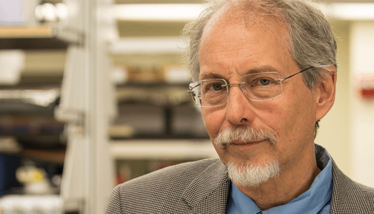The Synthesizer
Sitting Down With... Jef Boeke, Founding Director, Institute for Systems Genetics, Professor, Department of Biochemistry and Molecular Pharmacology at New York University School of Medicine, USA.

How did you get your start in genetics?
I didn’t really start considering genetics until my late college years. Before then, I was thinking more along the lines of being a naturalist. During my last year of college, I worked with a geneticist who opened my eyes to the power of experimental laboratory science. From there, my PhD advisors Norton Zinder and Peter Model, and my post-doc advisor Gerald Fink – all geneticists through and through – inspired me to continue in that direction.
What made you hone in on transposons?
As a graduate student, I started out as a bacteriologist, but wanted to move up to eukaryotes. That’s when I joined Fink’s lab – which was focused on yeast – and planned to undertake a project on transcriptional regulation. When I arrived at his lab, I was annoyed to find that someone else was working on that project, and Fink had assigned me to work on a project with transposons. I rather grudgingly accepted it, but soon realized it was actually a better project! I certainly didn’t set out to work on transposons, but it ended up being a wonderful project.
What’s the current focus of your lab?
About a third of the team is still working directly on transposon-related research, which began in yeast but has morphed into the study of mammalian retrotransposons, which is what the majority of my NIH-funded work is focused on right now. The rest of the researchers in my lab are working on projects related to the synthetic yeast genome project – Sc2.0 – that we started 10 years ago.
How did Sc2.0 begin?
The idea germinated from our frustration at not being able to express proteins from retrotransposons. One of my PhD students, Jeffrey Han, identified the source of the problem at the RNA level, rather than the level of translation. In desperation, he decided to re-code the entire transposon open reading frame, leading to high levels of protein expression. That got me thinking about the interesting possibility of redesigning a small genome.
Soon after, I was talking with Srinivasan Chandrasegaran – a Professor at Johns Hopkins – about another synthesis project. I suggested synthesizing a yeast chromosome and he got really excited, so we started planning out what we would remove and alter in the genome.
It took over a year to synthesize the first 90kb chromosome arm in conjunction with a biotech company, and it became obvious we needed a different approach. We hit on the idea of crowdsourcing – we developed a course called “Build a Genome” and got undergraduates to make DNA pieces for us. Today, Sc2.0 has spiraled into a project that involves labs and companies across four continents.
Can you describe your experience with Sc2.0?
It’s been pure fun, and we’ve learned a lot about both Saccharomyces cerevisiae – the yeast we used – and about synthetic biology. Editing and deleting certain genomic elements has allowed us to build yeast more efficiently and stop problems before they start. For example, the tRNA genes are prone to causing chromosomal breaks, but they’re essential to the yeast. So we’ve removed them and built their function into what we’re calling a specialized “neochromosome.”
As I mentioned, it’s been a decade since we started, and we’re more than halfway done. That may not sound like much, but almost all the synthesis is finished, so now we just need to put the chromosomes together and complete the assembly.
How did your involvement with Human Genome Project (HGP) - write come about?
Andrew Hessel from Autodesk Research wrote a paper in 2012 proposing that the synthesis of the human genome should be the next big thing. Then at last year’s Sc2.0 conference he mentioned it again. I was initially skeptical, but Nancy Kelly – who helped me organize the conference – and George Church (renowned geneticist) were excited about the prospect. The four of us started brainstorming, and I became more and more enthusiastic. HGP-write will be a bigger undertaking than Sc2.0 but it’s not a quantum leap. It’s going to be more expensive and less efficient than working with yeast, but if we focus on improving our technologies in tandem then we’ll be able to deal with those challenges.
Will knowledge gained in Sc2.0 help with HGP-write?
Definitely. We believe that it would be possible to do the same sort of iterative design process I’ve been using with the yeast project in HGP-write, but it’s certainly not the only option. If we’re going to scale up, we need to figure out a way to parallelize multiple teams as we did with yeast. But it’s still early days, and what we can do or how fast we can do it obviously depends on funding. I think we would have the highest chance of success if we can get strong buy-in from government and public funding. But I’m happy to talk to anyone who’s interested in funding the initiative.
Jef Boeke is the Director of the Institute for Systems Genetics at NYU Langone Medical Center.















